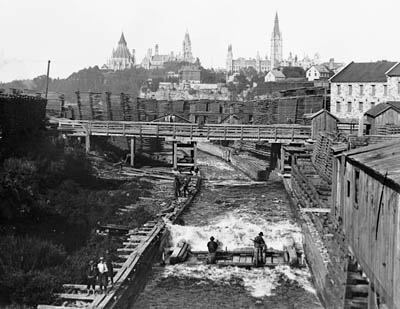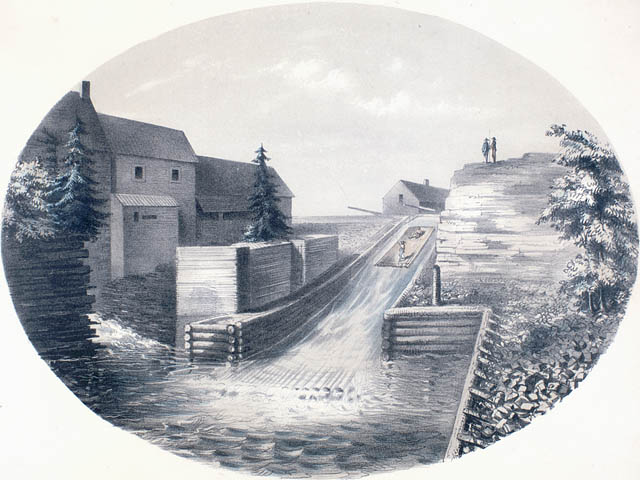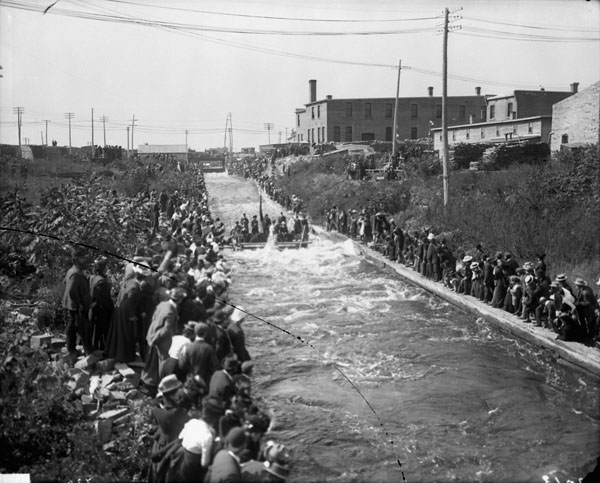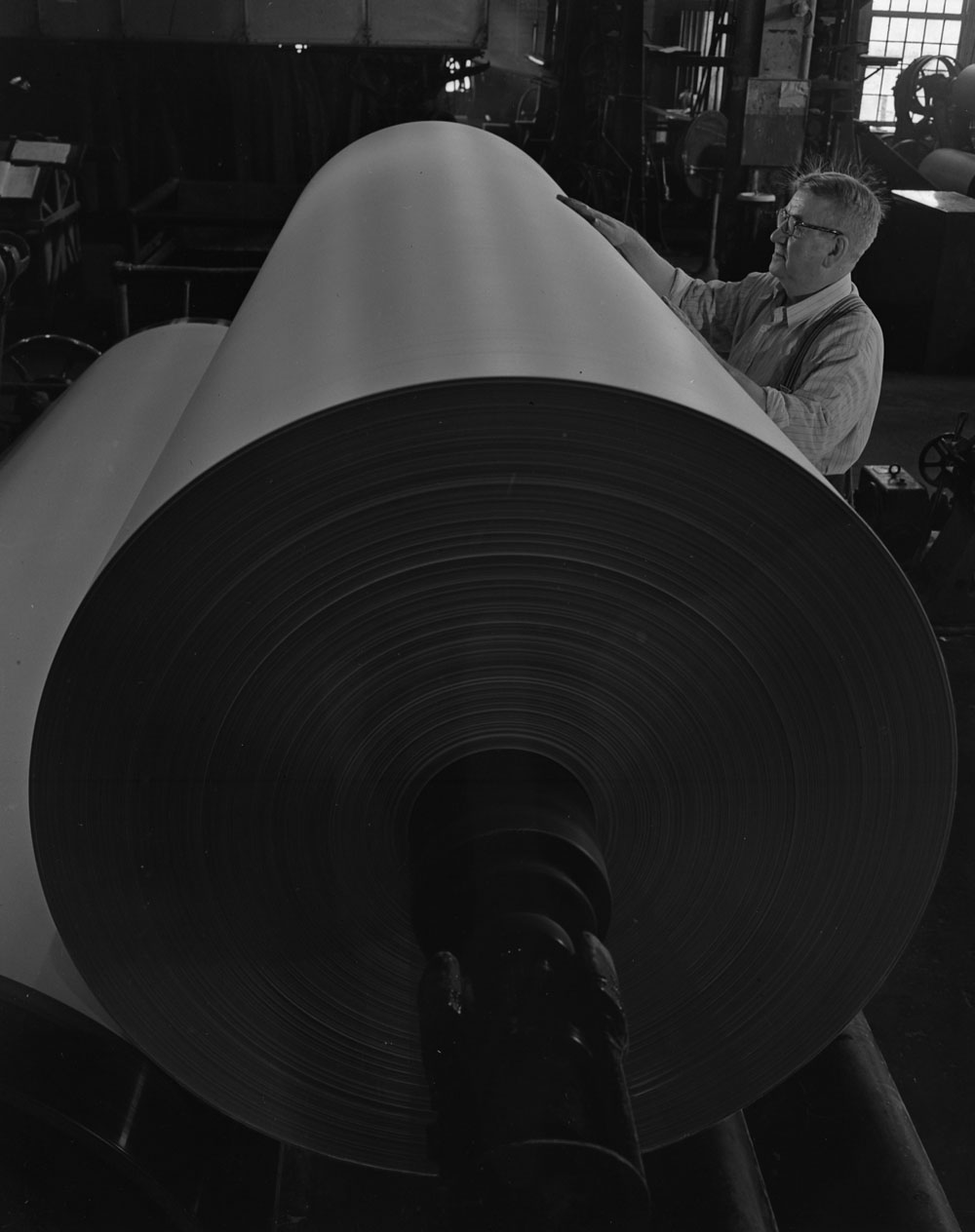A timber slide is a water-filled chute or runway built to carry “cribs” of timber around rapids and waterfalls. (See also Raft). Similar devices for individual pieces of wood were called “flumes.” Timber slides contributed to the growth of the timber industry in the 19th century (see Timber Trade Industry).

History
Ruggles Wright, the son of Philemon Wright, is credited with building the first Canadian slide in Hull in 1829. Made of wood and designed to spread the river’s fall over a km or more, slides quickened the timber drive, lessened chances of a jam and reduced damage. (See also Timber Trade Industry). Most common in the Ottawa River valley, slides were originally private toll-levying facilities. By 1846, public slides were operating as far up the Ottawa as Lac Coulonge. By 1870, the Canadian government maintained many public slides (which also collected tolls) to facilitate the timber trade in the Ottawa River valley.

Royal Visits
In 1860, the Prince of Wales (the future King Edward VII) rode down a timber slide on the Ottawa River during his visit to British North America. Similarly, during their 1901 royal tour, the Duke and Duchess of Cornwall and York (the future King George V and future Queen Mary) rode a crib down a timber slide. (See also Royal Tours of Canada.)

Legacy
For its capacity to transport timber and enhance the Canadian timber trade industry, the Hull Timber Slide was designated a National Historic Event by the Government of Canada in 1976.

 Share on Facebook
Share on Facebook Share on X
Share on X Share by Email
Share by Email Share on Google Classroom
Share on Google Classroom














